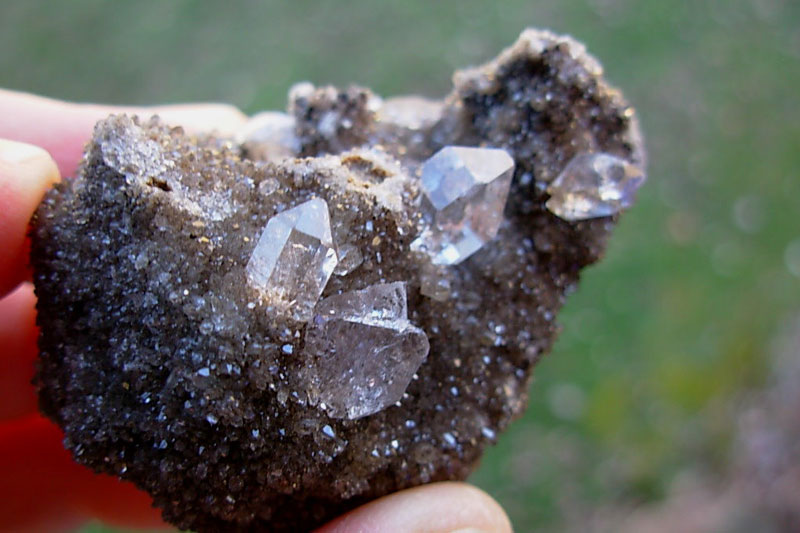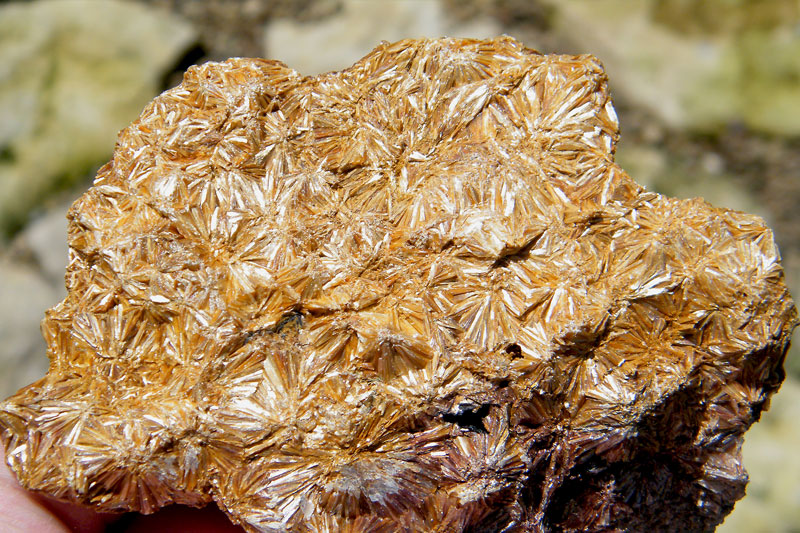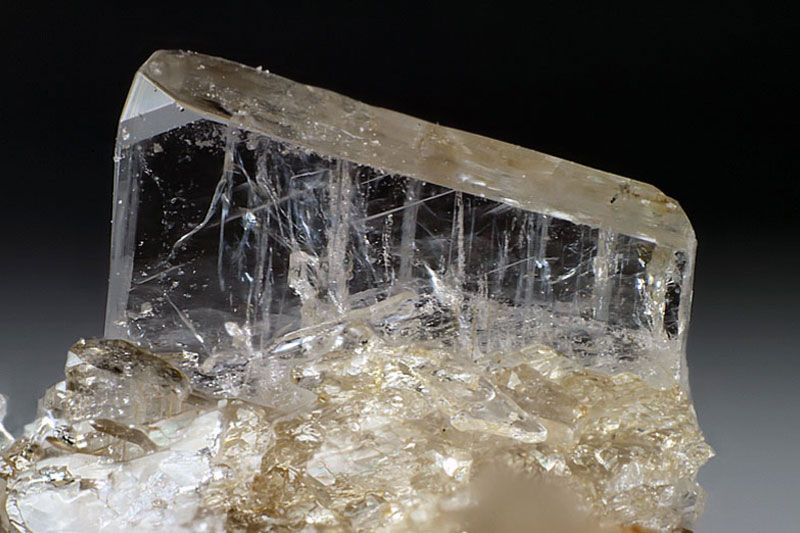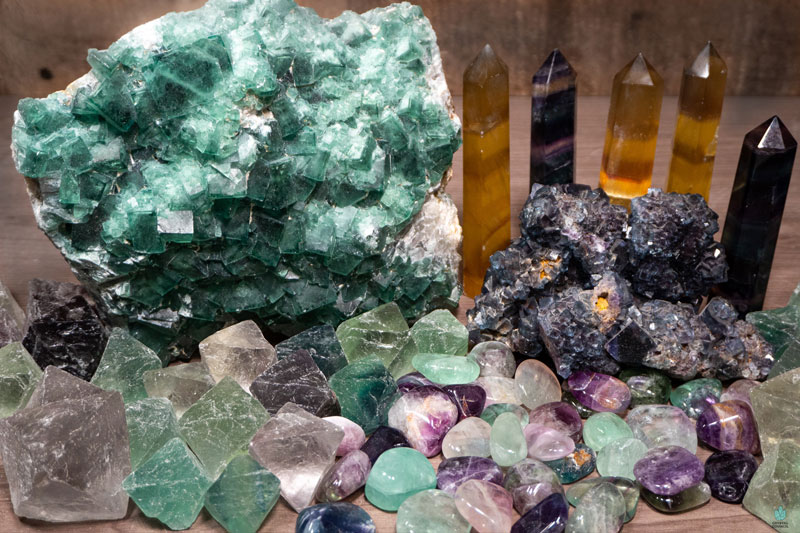QUARTZ
QUARTZ
Quartz is the second most abundant mineral on the Earth’s surface. It consists of one part silicon and two parts oxygen, with a chemical composition of SiO2. It occurs in hexagonal crystal forms and exhibits a variety of colors and shapes, but it is commonly colorless or white. Quartz is known for its glassy luster and has a hardness of 7 on the Mohs scale, meaning it can scratch glass and all types of iron. It also displays conchoidal fracture.
Occurrences of Quartz
Quartz is widely abundant on the Earth’s surface and can be found in various locations worldwide. It forms at different temperatures and is present in igneous, metamorphic, and sedimentary rocks. Quartz is highly resistant to mechanical and chemical weathering, which makes it a well-known mineral found on mountain peaks and a fundamental component of beaches, rivers, and desert sands.

Applications and Uses of Quartz
Quartz possesses specific physical, chemical, and electrical properties that make it highly usable in a wide range of industries and sectors, as follows:
Jewelry and Gemstone Industry: Quartz has been used in jewelry production and as gemstones for several centuries. Its solid nature, polishability, crystalline shape, and durability make it an excellent material for this purpose. Examples of commonly used quartz gemstones and jewelry include citrine, amethyst, rose quartz, agate, opal, and jasper.
Glass Industry: The glass industry is one of the primary applications for quartz. Silica dioxide (which must be exceptionally pure, at 99.9%) is melted to create glass, which can then be cooled into any desired shape by the manufacturer. Some quartz crystals are used in the production of lasers, microscopes, telescopes, electronic sensors, and scientific instruments.
Watchmaking Industry: Quartz crystals contain oscillators that can vibrate at precise frequencies, aiding in regulating the movement of watches. This makes them accurate timepieces without delay.
Metal Casting Industry: Quartz sand is mixed with binding agents such as clay, resinous sodium silicates, and oil for the purpose of casting and shaping metals. Quartz sand possesses desirable properties such as high melting point and heat resistance. Fine-grained quartz is used for smoothing the edges of metals after cutting or casting.
Thermal Materials Industry: Quartz sand is used in the manufacturing of refractory bricks due to its extreme strength and heat resistance. It is also used as a flux (molten material) to melt rough edges on metals after casting or cutting.
Petroleum Industry: Silica sands, together with water and other chemicals, are injected under high pressure into a specific rock formation through a well. The high pressure fractures the rocks, and the injected silica sand remains in place, creating a pathway for natural gas to flow from the rock formation to the well. This process is known as hydraulic fracturing or fracking.
Kitchen Surface Industry: Engineered quartz stones, commonly manufactured from raw quartz, are widely used as countertops and panels in residential and commercial buildings. The non-porous property of quartz prevents it from retaining stains, making quartz surfaces easy to clean, attractive, and luxurious.
Ceramic Industry: Quartz sand is used in ceramic production to make ceramic tiles. The silica present in the sand provides a white color to ceramic wares and helps in imparting texture and shape to ceramics.
Industrial Crystal Manufacturing: Artificial crystals are grown in laboratories, known for their resistance to acids, rust, high temperatures, corrosion, pressure, and bending. Synthetic crystals are used in electronics, semiconductors, solar power tools, and more.
Electronics Industry: Similar to the production of watches and clocks, quartz crystals are also used in electronics. When bent or compressed, they generate an electric current on their surface. Quartz crystals have been used to provide precise frequency for wireless transmitters, radio receivers, GPS devices, and computers. This accuracy is due to the fact that quartz crystal is unaffected by most solvents and remains crystallized at high temperatures.
Railway and Mining Industries: Quartz sand is used in railway and mining industries due to its durability and large grain size, which reduces cracking. It is also used in golf courses, volleyball courts, baseball fields, sandboxes, and beaches.
Filler in Adhesive Manufacturing: Quartz sand and ground quartz (powder) are used as fillers in adhesive, paste, paint, and rubber manufacturing. This is due to their durability, strength, non-reactivity with other substances, and resistance to corrosion.
Laboratory Crucibles: Laboratory crucibles are containers used to hold chemicals during chemical or thermal tests. Quartz possesses an exceptionally high melting point and is chemically inert. The advantages provided by quartz crucibles include.
- “Quartz crucibles are a common choice in the laboratory crucible industry due to the excellent properties of quartz. Here are some advantages provided by quartz crucibles in the laboratory industry:
- High melting point: Quartz has a very high melting point, reaching approximately 1650 degrees Celsius (3000 degrees Fahrenheit). This means that quartz crucibles can be used at high temperatures without significant impact.
- Thermal shock resistance: Quartz is resistant to rapid thermal changes. Quartz crucibles can be directly exposed to fire or rapidly heated and cooled without significant expansion or contraction. This property makes them ideal for use in extreme thermal experiments.
- Dimensional stability: Quartz crucibles have excellent dimensional stability. This means that they do not significantly change in size or shape under the influence of temperature changes or exposure to chemicals. Quartz crucibles can be relied upon to provide accurate and reliable measurements during testing.
- Chemically inert: Quartz is chemically non-reactive and does not react with most chemicals. This property makes it ideal for storing, heating, and handling volatile or organic chemicals.
- Easy to clean: Quartz crucibles are easy to clean and can be easily cleaned using chemical solvents or an autoclave washer.
In general, quartz crucibles are an excellent choice in the laboratory industry due to their unique advantages and high performance in chemical and thermal testing conditions.”




